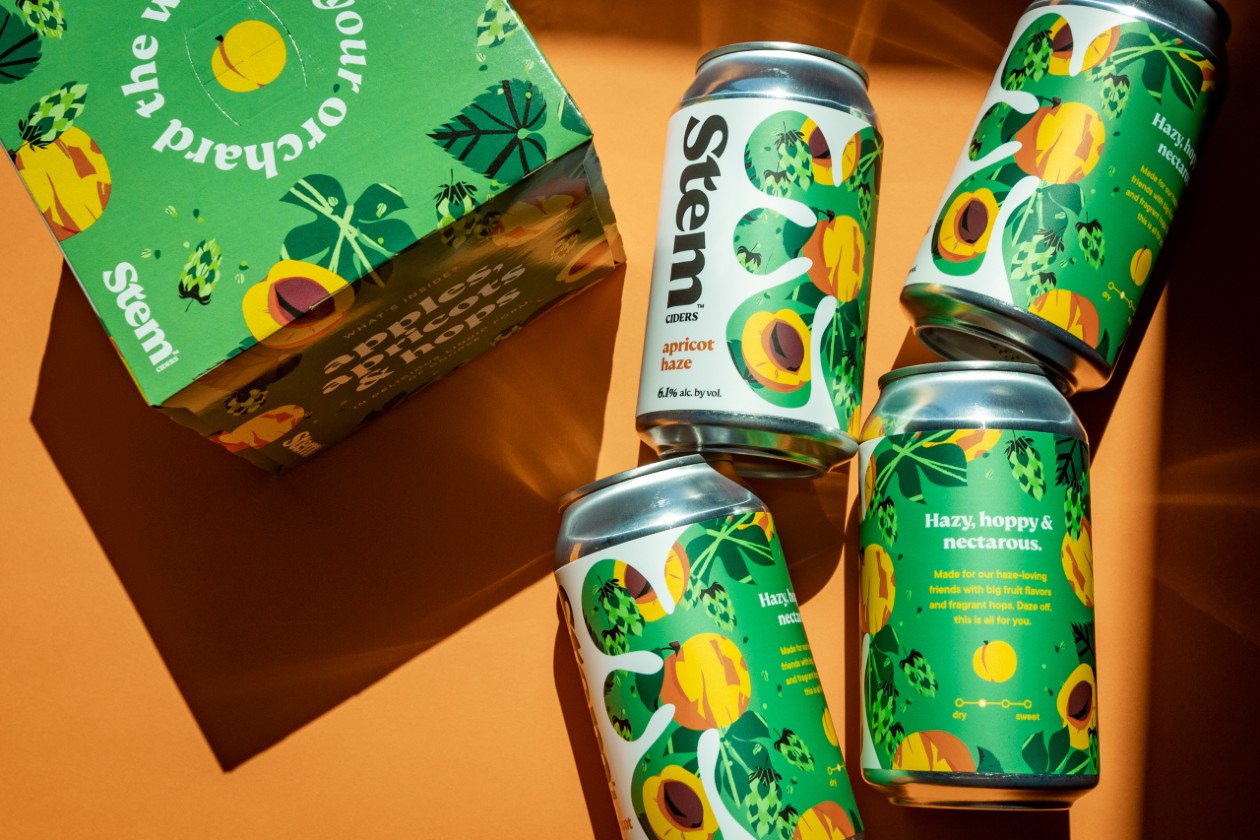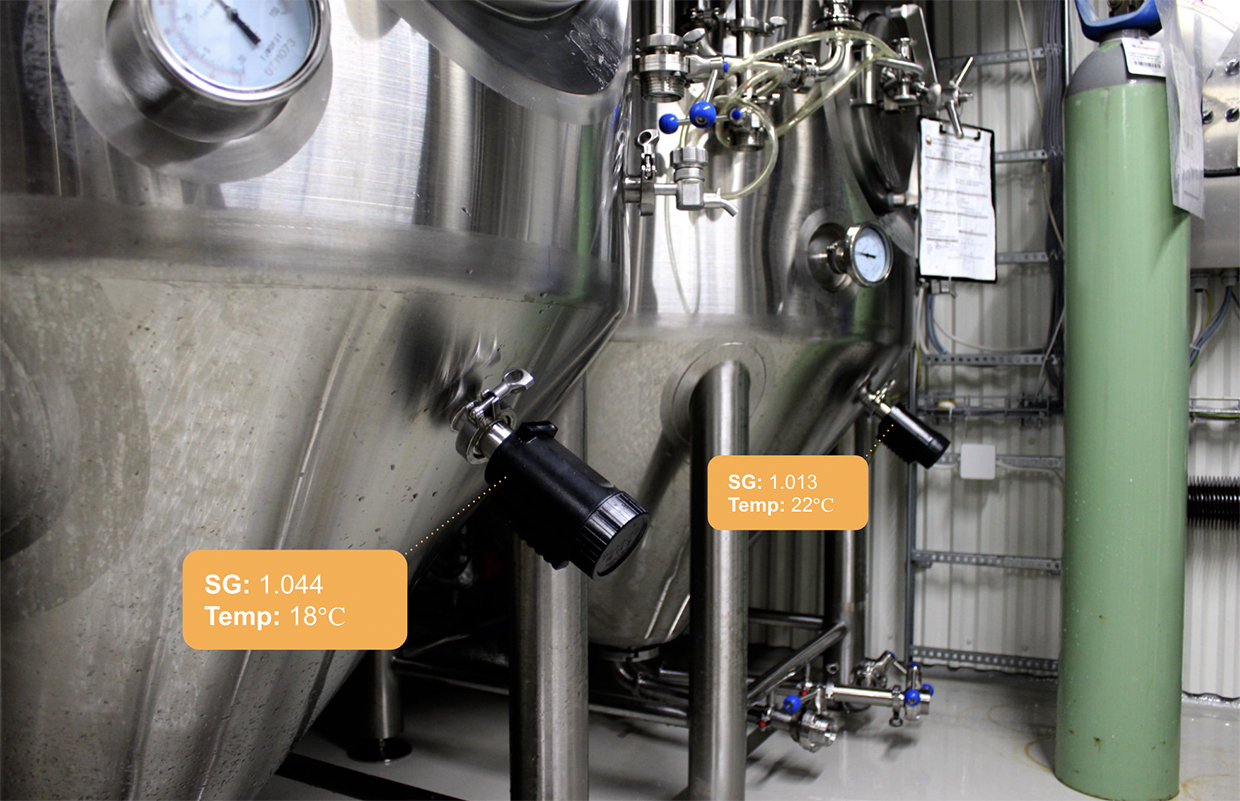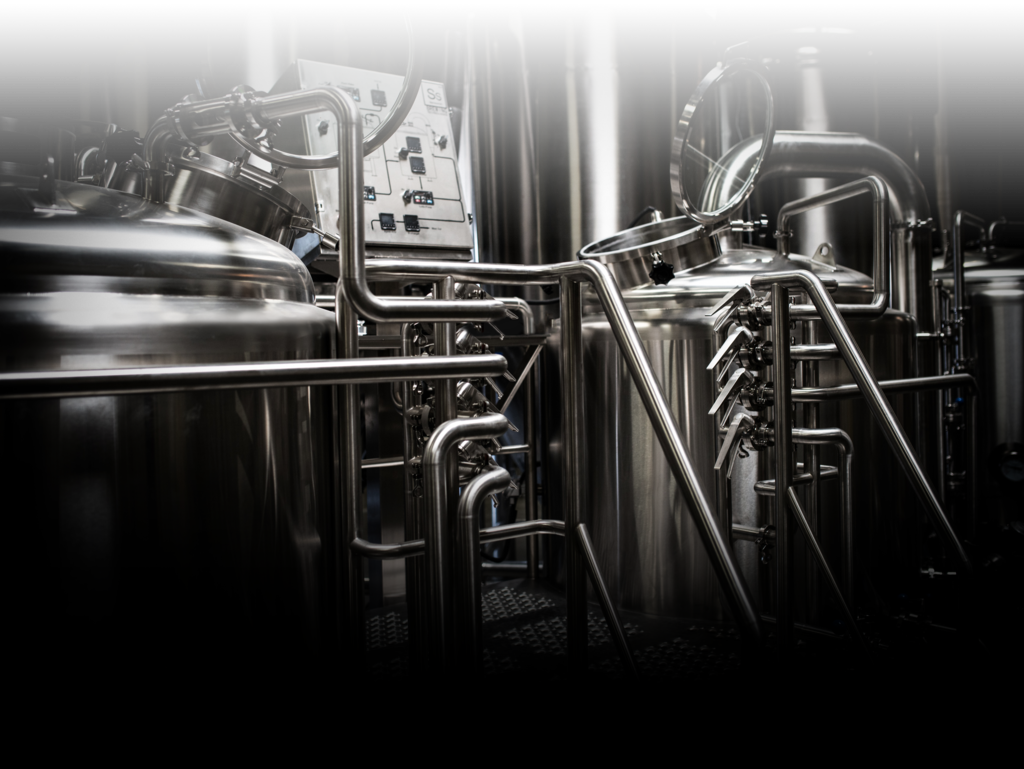
Earlier this spring, Stem Ciders presided over a cider designed to capture the attention of the Hazy IPA drinker, releasing CAPSTONE in April.
At the time of the release, Stem Director of Liquids Patrick Combs unveiled his process — creating a hop tea to help replicate the controlled heating process that takes place in a whirlpool hop addition, and conditioning it on fruit zest and puree to complement Mosaic hops and an apple cider base.
Combs went back to the well again for Stem’s summer release — Apricot Haze — which utilizes apricot puree and El Dorado, Sabro and Citra Hops for another take on Stem’s hazy formula.
The cidermaker said he fine tuned the process for this go round, improving on the method he used for CAPSTONE. He said he discovered that a slightly longer extraction period helps to lend a greater hop profile than was found in its initial iteration.
READ MORE: Making a Cider with Hazy Crossover Appeal
Cidermakers walk a fine line when utilizing the process, he warned.
“Too hot or too long of a steep, and you destroy a lot of the flavor and end up with a bland vegetal profile,” he told Brewer. “The end result is layers of hop character, instead of a more blunt grassy hop character from dry hopping alone.”
The cider is conditioned on apricot puree to help complement the natural stone fruit notes found in several traditional Hazy IPAs. The result is a hoppy apricot juice-forward cider that he said captures the hop profile of a Hazy IPA.
Combs said the precise control of steep time, temperature contributed to an excellent final product that obviated the issue of making a blunt grassy hop character that can happen from just dry hopping.
“I wanted to push the boundaries of hoppy cider and recreate my favorite elements of a hazy IPA,” said Combs. “I found that apricot worked really well at imparting the expected hazy orange hue, as well as recreating some of the elements of the creamy, silky mouthfeel.”
“The issue with dry-hopped ciders is that it doesn’t produce the same flavor profiles found in hoppy beers. The whirlpool hop addition (the first round of hops added after the initial boil) in beer adds certain hop characteristics that can’t be replicated by merely dry-hopping a cider.”




Be the first to comment